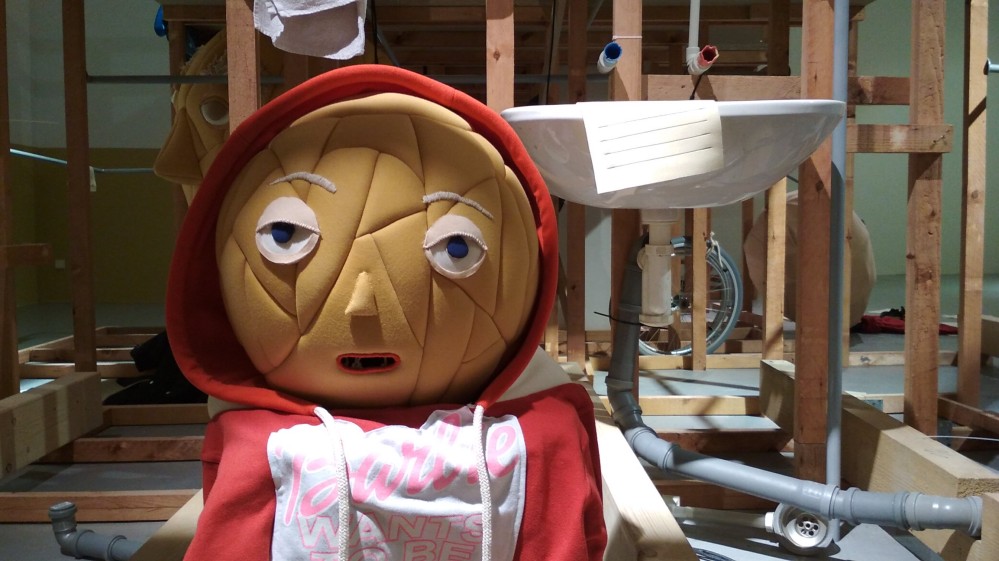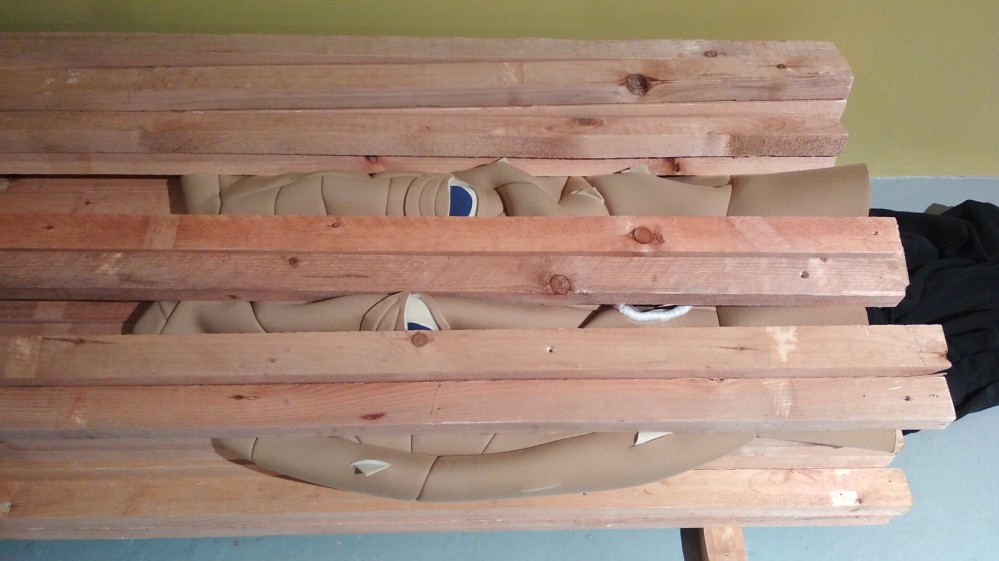Prague, January 13 – May 6, 2021, https://www.meetfactory.cz
This exhibition, split into three equal parts in three rooms, dealt with the topic of disabilities. Who decides who is “normal” and who not?
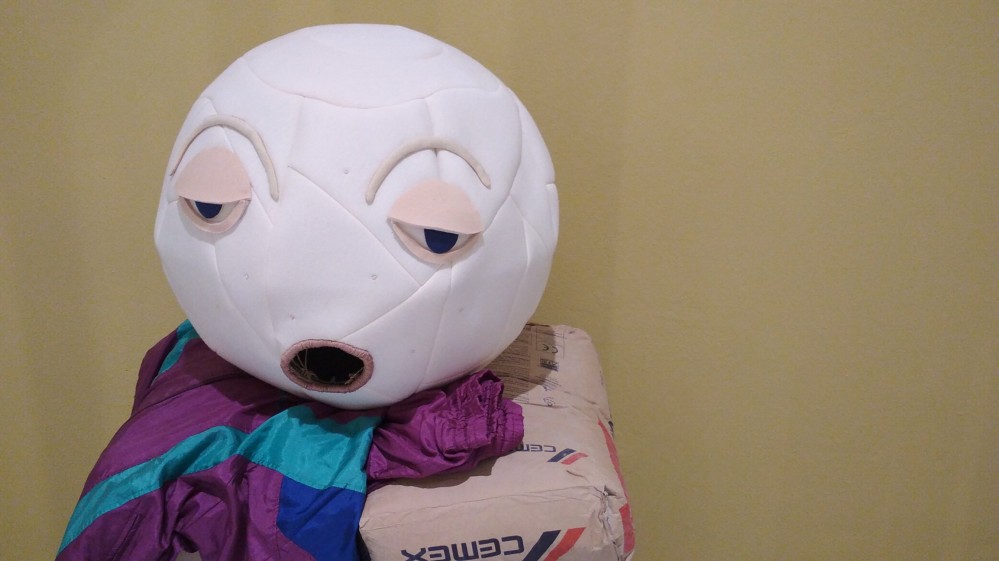
The first room was dedicated to a large scale installation that looked a bit like a construction site. All across the site, over-sized human-like heads made from cloth were distributed. These heads were “talking” in an alternating sequence, building up a story about the intended construction of a home with assistance for people with disabilities in a small town somewhere. The heads expressed opinions of the different stakeholders in the project. Mostly different fears and prejudices about people with disabilities. Somehow, no one was “against” the project, but everyone had some reasoning why it would be better to build it somewhere else. Typical.
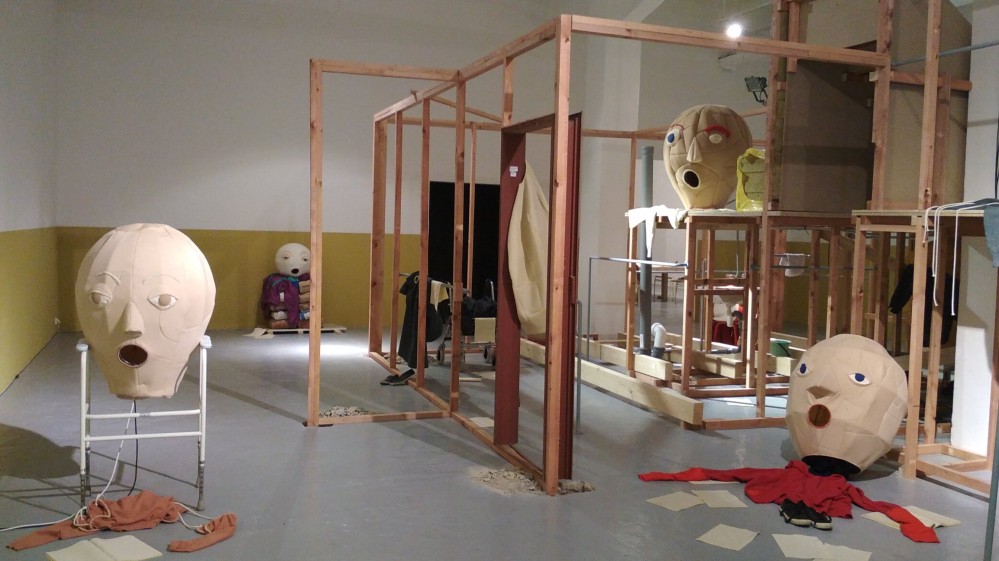
I liked the human scale of the installation. The over-sized heads expressed well the over-sized fears and imagination that takes place in people´s heads. Overall, everything about this installation was very well thought through.
The second room, pitch black, contained an unbelievably huge octopus-like head with long tentacles. As in the first room, it was constructed from cloth and stuffed, like a teddy animal. Once again, the octopus head was “talking” narratives about the discrimination of people with disabilities from the disabled individuals point of view. The narrative was probably based on real interviews, as it was quite intense and did not leave any space for doubt that this was a real concern.
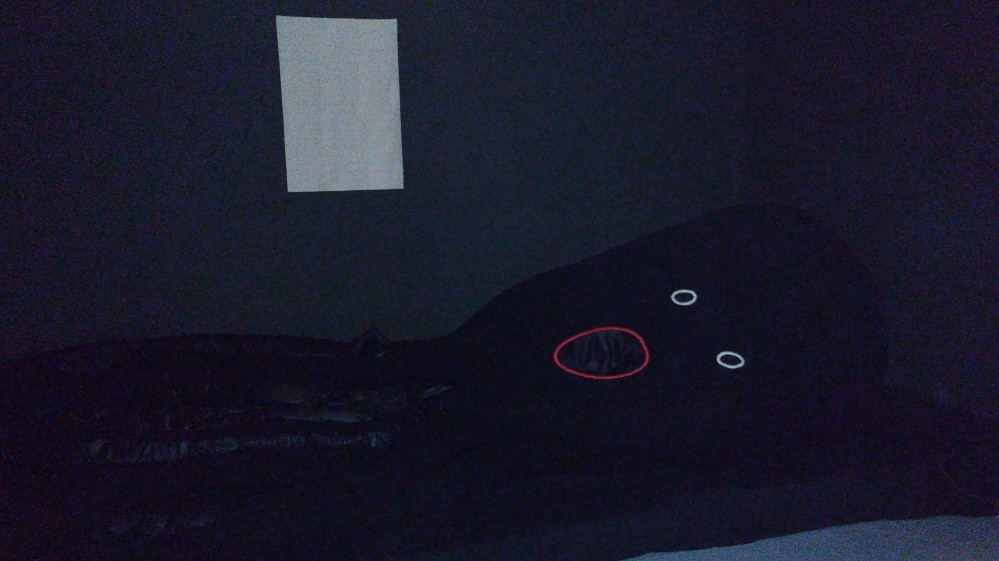
The huge dark octopus was a materialization of what the discussed situations of fear and inability to overcome projected stereotypes must look like in the head of the concerned person: A “social monster” that feeds on fear and stereotypes of otherness. A person might have a disability, but it is society that perceives and treats him/her as if the disability is all that there is to that person, ignoring the commonalities between the normal and the abnormal human being.
The third room was a brighter, with a large table with an image bank of human and animal body part images and large lettering. Next to it a large textile wall, where I assume people could mount the images and define their own image based on their perception free of stereotypes in the context of a workshop. This room was not completely understandable for me as a single visitor, but I also completely understood the need for an open, collaborative space after the rather heavy experience of the two prior installations.
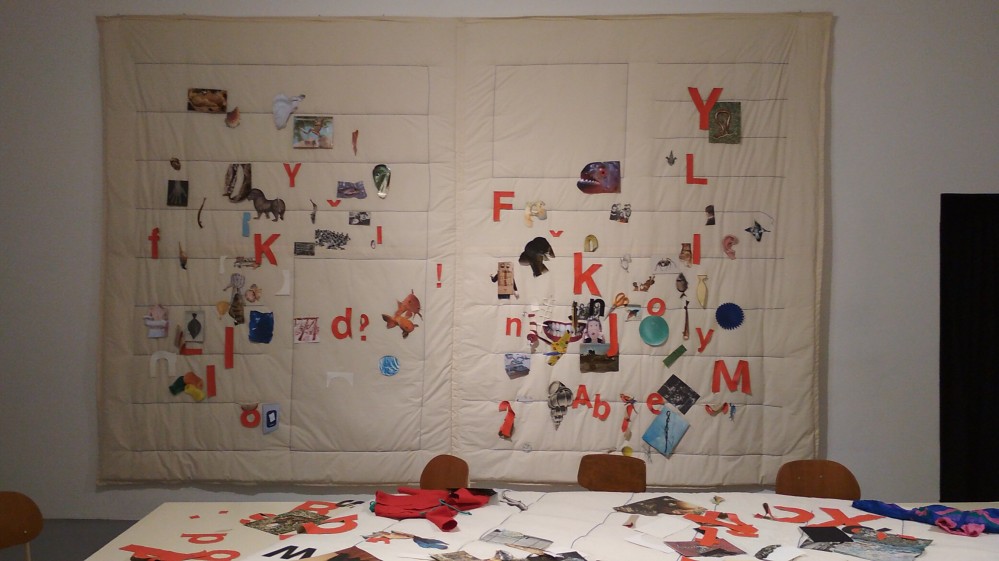
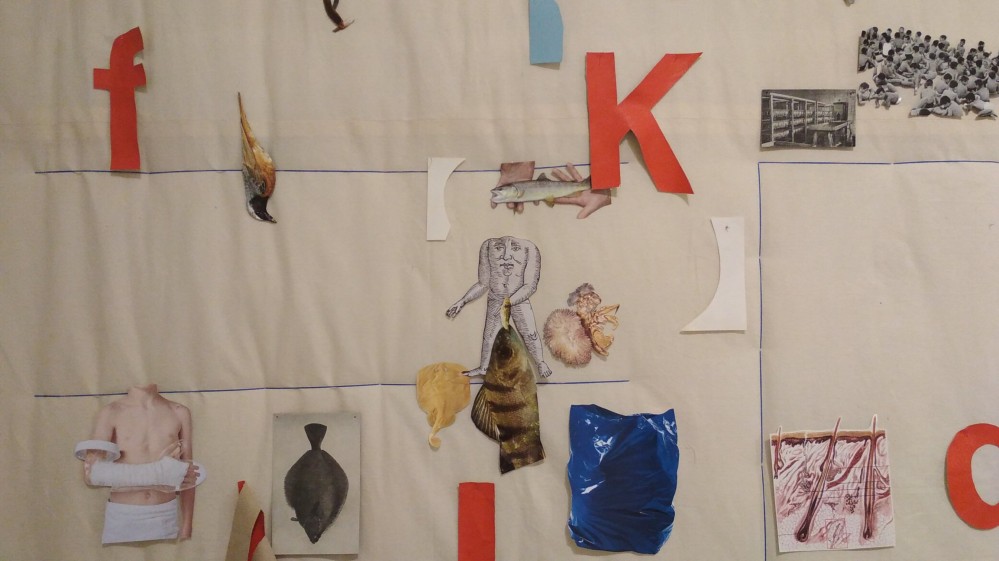
Overall, I was very impressed by this show. The installation looked very dreamy and unreal, but the narrated soundtrack felt very real. It was one of the rare art projects, that managed to address a social issue in a way that was very sensitive. Not simply descriptive, not exploitative, but honest and real. My conclusion is that Eva Kotatkova has a real deep interest in this topic, probably also a personal involvement.
The accompanying exhibition text written by curator Tereza Jindrova was very good too. Quite a long read, well informed and providing factual background information to the topics discussed in the exhibition. Worthwhile to read.
It is a pity that probably less people than usual visited this show due to the pandemic, but hopefully, given Eva Kotatkova´s international exposure, this is not the last time this kind of installation happened. Even though I wonder how this would translate to other languages and cultural contexts, because one of the touching thing about this show was how exactly it mirrored the everyday reactions and situations in the local context of Czech Republic.
